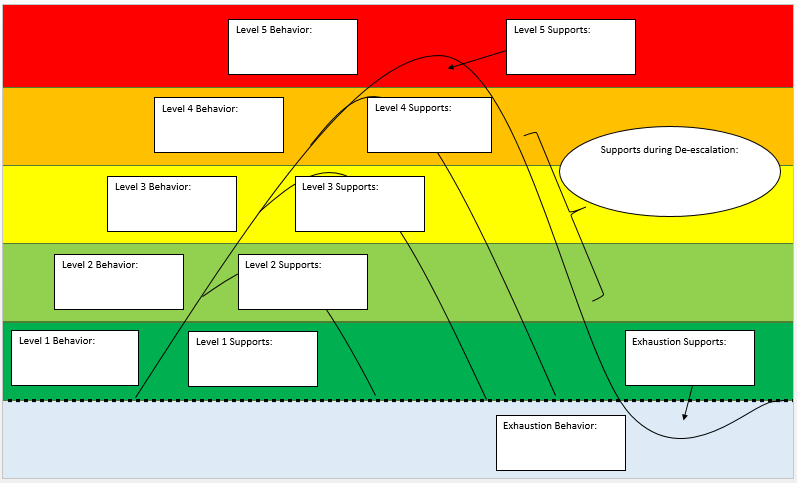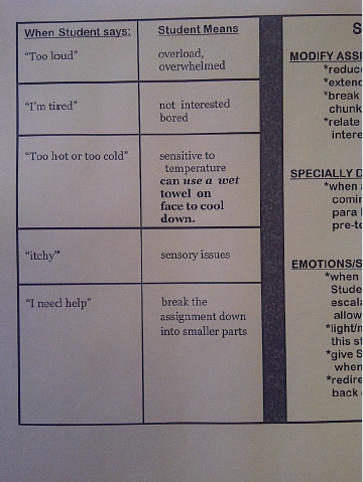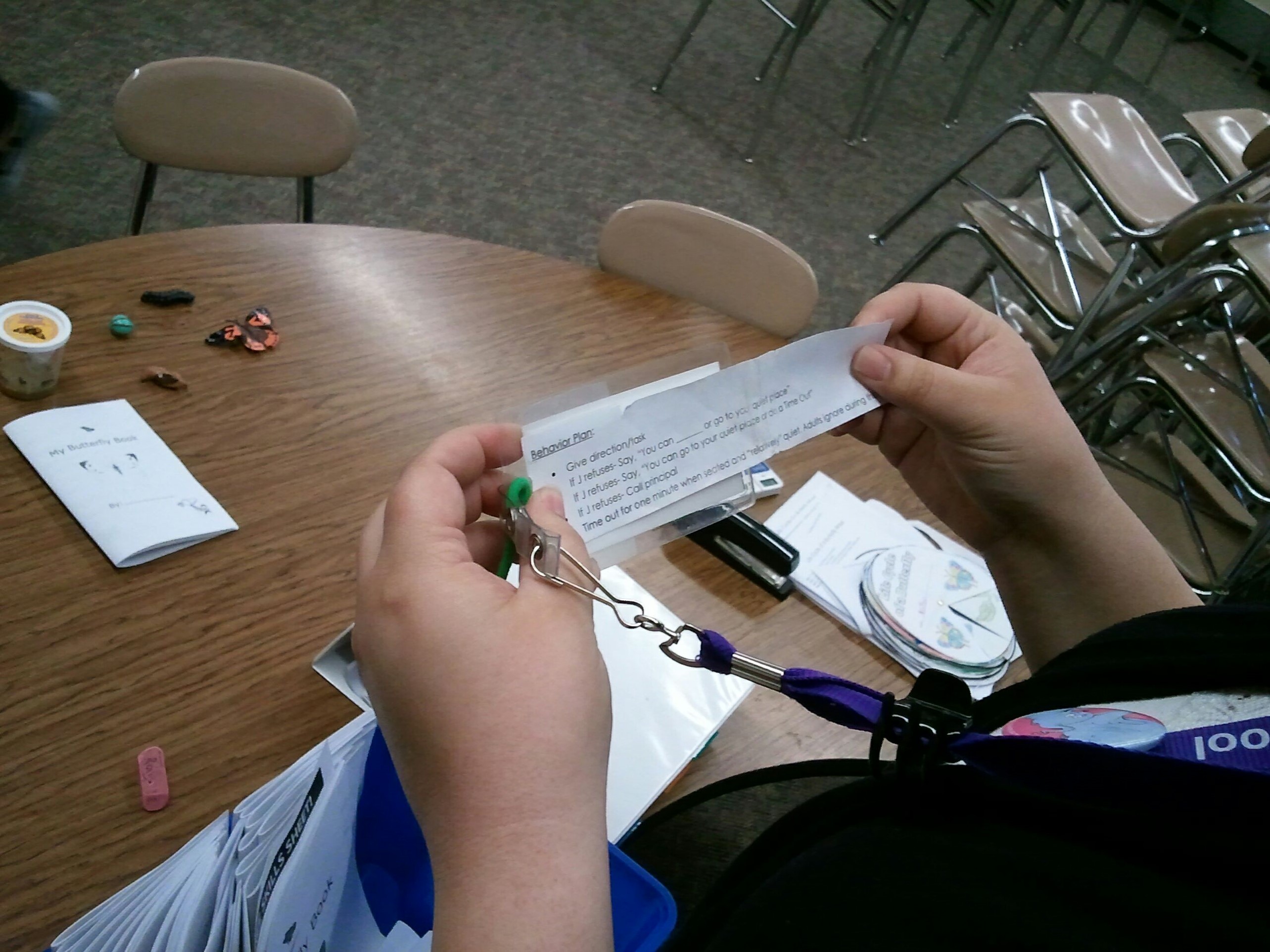Let’s talk more resources to make life easier!
A student’s escalation cycle can have a great amount of detail, from the specific observable behaviors at each level to the carefully crafted interventions. I shared with you earlier this great visual to help represent the big picture of a child’s escalation and how staff are to respond.
If you need more detail but don’t want to compromise the visual, I would recommend using this next sheet. It is essentially an overlay for the full cycle but allows you more space for detail. I would recommend using one or both of these resources for planning about the response plan.
For data collection purposes you can then just track what levels the student reached throughout their day instead of having to document every specific behavior. Here is a simple example of what that student’s data sheet could look like.
Staff who interact less with the student will need something a little more brief and to the point. Below you see a cheat sheet for a middle school student with autism. This hard-to-lose colored card stock reminds staff what to do when the student in question uses certain phrases.
Here you see an elementary teacher who has put her own notes to a specific behavior plan on the back of her I.D. badge.
If you can bridge the gap between complex planning and simple implementation you will increase the likelihood of consistent team follow through. When both the staff and the student know what to expect at what time it can put anxiety at ease and set the tone for learning. Collaborate and communicate so that the student can enjoy the team’s confidence and competence to support them during every point in the day.










